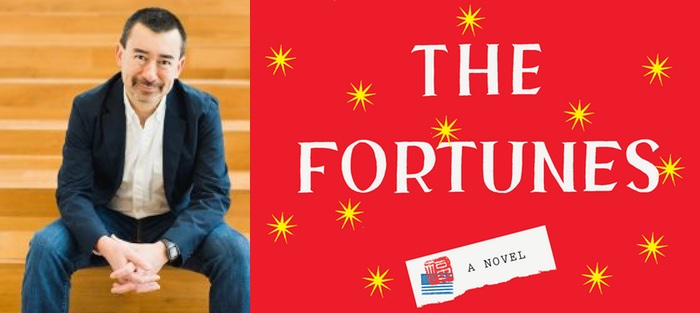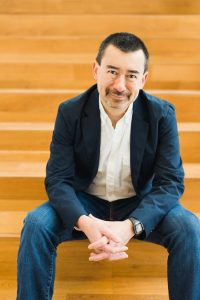Editor’s Note: For the first several months of 2022, we’ll be celebrating some of our favorite work from the last fourteen years in a series of “From the Archives” posts.
In today’s feature, Eric McDowell talks with Peter Ho Davies about process, representation, and The Fortunes. This interview was originally published on December 21, 2016. Davies’s latest book, The Art of Revision: The Last Word, is out now from Graywolf.
Back in Equal Love (2000), Peter Ho Davies offered up his guide for the dislocated, “How to Be an Expatriate.” Here’s a typical passage:
At Thanksgiving, call your parents and tell them, “It’s Thanksgiving.” Explain that it’s just like Christmas, “except without presents or a tree.” Spend the day with the family of the New Yorker. Her mother tells you she loves your accent. She knew a girl from England once who was evacuated to the U.S. during the war. Maureen Johnson was her name. You nod, not that you know her, but as though you might know her. They ask you all about England, what you think about the Queen, Princess Di, Northern Ireland. Form some opinions. They tell you how much they admire Margaret Thatcher. You compliment the pumpkin pie. No, they don’t have pumpkin pie in England. You tell your parents all this on the phone, and your mother says, “Americans are very hospitable, aren’t they? I’m so glad they took you into their home.” Feel suddenly like a refugee receiving charity.
Of course, the story’s no guide at all, but a gesture toward the advice the eponymous protagonist may wish were available to him—or toward the anxiety, expressed by those pressuring second-person imperatives, that there is a right (and thus a wrong) way to be who you are.
Sixteen years later, in The Fortunes, published earlier this fall by Houghton Mifflin Harcourt, Peter continues to explore some of this same territory. Which isn’t surprising, if, as he does, you think of a writer’s body of work as a jigsaw puzzle whose assorted pieces lock together into a kind of fractured but unified picture. The Fortunes also shows Peter continually perfecting those same qualities that make “How to Be an Expatriate”—and all the prose in his first three books, really—so instructive to the rest of us writers, not to mention moving. There’s the formal play and the masterful compression. The sly humor and the subtly observed emotional cadences. The acuity of perception that—goal of goals—allows us to see the familiar in fresh ways.
Told across four different narratives, The Fortunes is an aptly hybrid work of “historical fiction,” as unwieldy to summarize as an identity itself. In the first long section, “Gold,” we see the world of the nineteenth-century Transcontinental Railroad construction in California through Ah Ling, the Chinese boy servant of industrialist Charles Crocker. In “Silver,” brief fragments follow Anna May Wong, the first Chinese-American movie star, as she journeys on tour to China. “Jade” retells the 1982 hate crime murder of Vincent Chin from the perspective of Chin’s friend, who was there that night. And sidling up to the present, “Pearl” finds a Chinese-American writer and his wife in Guangzhou, where they’ve come to adopt a baby. Threaded throughout these four stories are not only complementary meditations on race, representation, and hybrid identity, but also details and images whose echo effect gratifies close attention.
Peter lives in Ann Arbor, Michigan, and teaches at the Helen Zell Writers’ Program, where I first met him in 2011. Beyond Equal Love and The Fortunes, he’s published the collection The Ugliest House in the World (1997) and the novel The Welsh Girl (2007), both essential reading. He’s earned no shortage of awards and honors and is known, more locally, as a commanding if benevolent presence on the indoor soccer pitch. (You might say he plays soccer the way he writes: better than most, but in a way that makes it fun for the rest of us to aspire to his level.) We conducted our interview over a series of e-mails, beginning with Peter’s initial inspiration for The Fortunes and progressing up through the book’s post-publication political context.
Interview:
Eric McDowell: Let’s start at the beginning. You’ve mentioned elsewhere that the first section of The Fortunes was not only your starting point for the novel but actually your initial vision of its entirety. How did the novel outgrow your original conception?
Peter Ho Davies: The beginning, the first stirrings of my interest in the Chinese working on the Transcontinental railroad, goes back two decades to a train trip I took across the country not long after moving here. The idea of the Chinese building the railroad from the west, while a largely Irish labor force built it from the east, somehow spoke to my own mixed race background. But it also seemed like a huge, sprawling subject, and one I set aside for several years, daunted both by my inexperience as a writer and my inexperience of the US. And yet I found myself returning to it periodically between other projects, and on one of those returns I found a way into the material via the figure of Ah Ling. Crocker was supposedly inspired by Ah Ling’s example to hire thousands of Chinese (who, according to the prevalent stereotype of the day, weren’t physically strong enough for such work).
Ling, who seems to have existed but now appears as little more than a historical footnote in biographies of Crocker, gave me an individual, a character through whom to imagine the history. But a hundred or so pages in, the character, at least as I imagined him, decided to withdraw from that history, slip back into the crowd and out of the limelight. It felt like the right decision for him, but I confess it left me in bit of a bind, until I realized that what had interested me in him was his equivocal role as a representative—the privilege and burden of one person standing in for others. That was a role I recognized in other figures—Anna May Wong most obviously, but also in myself as a writer of color. That affinity began to suggest a book that could move though time looking at various iconic Chinese-American figures as a way of tracing the community’s place in America.
So you were able to turn that obstacle into an advantage, refining your relationship to the material and exploding the scope of the project. At the same time, allowing our work to betray our initial hopes for it can often be a frustrating, painful, and above all slow process. You’ve talked in other interviews about the importance, especially for young writers, of patience.
How do you keep your footing while a project shifts underneath you? Have you learned anything from your previous books—or even unfinished work—that helped you through the evolution of The Fortunes?
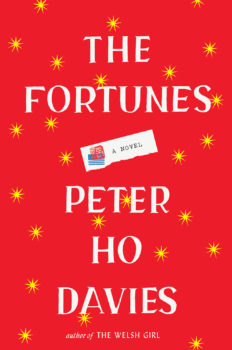 My past experience with my first novel, The Welsh Girl, which also evolved in fits and starts (a 550-page “kitchen-sink” draft giving way to a skeletal 150-page one at one point) made it a little easier to handle the re-conception of The Fortunes. Basically, I’d felt hopelessly stymied before and somehow found a way through, and that prior experience did inform my patience. What makes these shifts hard tends to be our desire to cling to our initial entrenched visions of a book. I do think it’s important to have an idea of what we’re doing at the outset, but I try to see that as a hypothesis of where the book will go, what it will be about. A hypothesis is subject to testing and modification in the experiment of any draft, and even if it’s disproved we might embrace that as progress. (I have a science background, which probably suggested this way of thinking.) To put it another way, the “trick” is to become excited about the new direction for the book, as I was when I turned from Ah Ling’s story to Anna May’s. Suddenly what I’d resisted turned out to be exactly what I wanted to write. I felt free, and moreover I realized I (in the form of my initial idea of the book) was the one who’d confined myself.
My past experience with my first novel, The Welsh Girl, which also evolved in fits and starts (a 550-page “kitchen-sink” draft giving way to a skeletal 150-page one at one point) made it a little easier to handle the re-conception of The Fortunes. Basically, I’d felt hopelessly stymied before and somehow found a way through, and that prior experience did inform my patience. What makes these shifts hard tends to be our desire to cling to our initial entrenched visions of a book. I do think it’s important to have an idea of what we’re doing at the outset, but I try to see that as a hypothesis of where the book will go, what it will be about. A hypothesis is subject to testing and modification in the experiment of any draft, and even if it’s disproved we might embrace that as progress. (I have a science background, which probably suggested this way of thinking.) To put it another way, the “trick” is to become excited about the new direction for the book, as I was when I turned from Ah Ling’s story to Anna May’s. Suddenly what I’d resisted turned out to be exactly what I wanted to write. I felt free, and moreover I realized I (in the form of my initial idea of the book) was the one who’d confined myself.
There are other tricks to keep our morale up, of course. I’m pretty good at salvaging things even from wrecked drafts (maybe because I’m a slow writer). It also helps to sometimes imagine my entire writing output, thus far and into the future, as a jigsaw I’m making. Sometimes, as with a jigsaw, a piece comes to hand that I try to no avail to fit into the corner I’m working on…but you don’t throw that piece away. You hope it’ll find its rightful home elsewhere in the puzzle.
Finally, though, in the case of both of my novels there came a point where I felt I was all-in, pushing all my chips into the center. I have writer friends—whom I envy!—who seem to be able to see a few novels down the line, but pretty much every book I’ve written has felt at some point as if it might be my last. That’s not comfortable, but I think that desperation (for want of a better word) has added something to each project.
I love that image of the jigsaw puzzle as a way to think about process on a very macro level. Plus, each wrong piece you pick up and put aside brings you closer to the right one.
From a craft perspective, too, there seems to have been a benefit of abandoning a single unified narrative for four complementary ones—it gives you the chance to work in four different modes, voices, perspectives. This multiplicity is certainly evident in your earlier books, but maybe it takes on even greater thematic relevance in The Fortunes, where identity and authenticity are such central concerns.
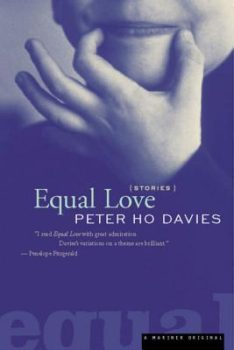 I think that’s a short story writer’s aesthetic—a kind of restless play that stories afford us (and that I’ve always pined for when writing novels). Every story in a collection can shift its ground—radically or subtlety—and that feels like freedom. A novel by nature tends to be more confined—in voice, in style. The Fortunes felt like a happy medium. What appeals to me most may be its slightly indefinable status. We’re calling it a novel, but it’s made up of four discrete (if thematically linked) narratives. We’re calling it fiction, too, albeit it draws on three real historical lives. But for me that liminal quality, neither one thing nor the other, is exactly the point in that it mirrors the central question of the characters’ identities—are they Chinese or American? Their answer, my answer, is something like both or neither. The goal is to resist the reductive duality—just as the book resists, I hope, being reduced to novel or collection, fiction or fact. Hybridity is what the characters and the book, and hopefully its readers must engage with.
I think that’s a short story writer’s aesthetic—a kind of restless play that stories afford us (and that I’ve always pined for when writing novels). Every story in a collection can shift its ground—radically or subtlety—and that feels like freedom. A novel by nature tends to be more confined—in voice, in style. The Fortunes felt like a happy medium. What appeals to me most may be its slightly indefinable status. We’re calling it a novel, but it’s made up of four discrete (if thematically linked) narratives. We’re calling it fiction, too, albeit it draws on three real historical lives. But for me that liminal quality, neither one thing nor the other, is exactly the point in that it mirrors the central question of the characters’ identities—are they Chinese or American? Their answer, my answer, is something like both or neither. The goal is to resist the reductive duality—just as the book resists, I hope, being reduced to novel or collection, fiction or fact. Hybridity is what the characters and the book, and hopefully its readers must engage with.
With just that kind of liminality in mind, I’m reminded of W.G. Sebald’s books, which tend to hesitate on the threshold between document and fiction—and actually, in Vertigo and The Emigrants, ask readers to puzzle together four novellas. Or John Keene’s recent Counternarratives, a wonderfully varied collection of re-writings of history. What writers or books influenced you while working on The Fortunes?
I’m not sure writers are always the best judges of their own influences. You’re right about the way Sebald’s work hovers between fact and fiction, for instance, but I wasn’t conscious of those books as an influence (though I’ve read them so they may well have been). I did invoke some of the current works of auto-fiction, Ben Lerner’s 10:04, say, in conversations with my editor, but that felt more post-hoc, more a means of talking about an aspect of the book’s last part than an influence.
More pertinently, I did find myself taking heart from several books with unusual forms as the novel’s structure evolved. I’m thinking here of Jennifer Egan’s A Visit from the Goon Squad, or David Mitchell’s Cloud Atlas, or Geoff Dyer’s Jeff in Venice, Death in Varanasi, all of which felt like hybrid forms somewhere between the novel and the collection, and all of which ask the reader to make connections between disparate units of text. And then there were surely influences on particular parts of the book. The Anna May Wong section, I suspect, owes a little to Lydia Davis in some convoluted way, as well as to Renata Adler’s Speedboat. I think (only half-seriously) of the narrator of the last section, a sort of self-hating Chinese-American writer, as my version of Nathan Zuckerman!
That’s one I might not have thought of, but the whole idea of the alter ego fits in well with issues of selfhood and representation. But reaching back to the question of the book’s balance of fact and fiction, can you talk about your research process? You cite over a dozen works in your acknowledgments, and I know you did some traveling…
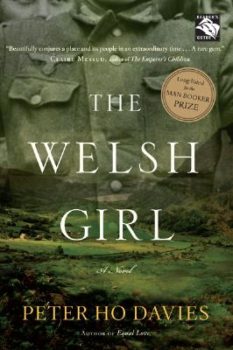 The first three sections of the book address real, historical figures and circumstances so there was a good deal of book and museum research, as well as travel to several significant locations. I drove and rode the train over the Sierras a couple of times, for instance, and explored the original railroad tunnels dug out by Chinese laborers. I also spent time in LA visiting some of the sites of Anna May Wong’s story, and in Detroit on the streets where the Vincent Chin case transpired. Of course, it’s impossible to travel back in time—the streets of LA today aren’t the same streets as they were in the 1920s and ’30s, say (though certain iconic locations like Union Station remain)—but it did feel helpful to experience some of these places first-hand, especially the landscape and weather of the Sierras. I also travelled to China to research the final contemporary section and again—even though I’d written much of that section before the trip—the experience of being there was important in realizing the final fiction. (One trivial example: I’d already written in a brief mention of my protagonist visiting the Great Wall, but only after going myself and walking a stretch of it was I able to add a detail about the tightness in his calves that he feels the day after scaling those steep slopes.)
The first three sections of the book address real, historical figures and circumstances so there was a good deal of book and museum research, as well as travel to several significant locations. I drove and rode the train over the Sierras a couple of times, for instance, and explored the original railroad tunnels dug out by Chinese laborers. I also spent time in LA visiting some of the sites of Anna May Wong’s story, and in Detroit on the streets where the Vincent Chin case transpired. Of course, it’s impossible to travel back in time—the streets of LA today aren’t the same streets as they were in the 1920s and ’30s, say (though certain iconic locations like Union Station remain)—but it did feel helpful to experience some of these places first-hand, especially the landscape and weather of the Sierras. I also travelled to China to research the final contemporary section and again—even though I’d written much of that section before the trip—the experience of being there was important in realizing the final fiction. (One trivial example: I’d already written in a brief mention of my protagonist visiting the Great Wall, but only after going myself and walking a stretch of it was I able to add a detail about the tightness in his calves that he feels the day after scaling those steep slopes.)
For you, when is it best to work from your imagination, and when is it best to turn to “the facts”?
The degree to which we work from facts or imagination is shaped initially by the material. Ah Ling and Anna May Wong are both real figures…but he’s only a footnote in a couple of history books, whereas there are several fine biographies of her as well as the wealth of coverage you’d expect for a global celebrity. In his case the life on the page—albeit informed by research into his times and circumstances—is largely imagined. In her case, the facts are so extensive they almost seemed to hem me in, until I realized that—as with any celebrity then or now—what was written about her in newspapers, even what she said in interviews needn’t be taken at face value. A specific quote from her might constitute a historical fact in the sense that she really said it, but what’s open to fictional interpretation is whether she meant it. The obvious case in point is her attitude to interracial relations. Miscegenation was illegal at the time, and depictions of interracial romance essentially banned on screen, in which social and professional context she’s quoted as saying, “The only happiness is with someone of one’s own race.” And yet we know she had several affairs with white lovers throughout her career. The space between the public life and the private life is a space for fictional speculation to flow into. It fills a gap in the record, without necessarily contradicting the known facts. And in general that’s what I look for in historical material, a space of uncertainty that the historical record can’t quite account for.
One more thought in this regard. It’s always tempting to think of a before-and-after in regard to research, and it would be awfully neat if we could do all the research first followed by the writing. For me the process is more dialectical. I do enough research to inspire myself to write, write until I run out of steam or reach the limits of my knowledge, go back and do more research until I find myself primed to write again, and so on.
Right, the two modes feed off each other. But—and you’ve touched on this question in other interviews—why work with such historical/factual specificity in the first place, as opposed to pure invention?
The deployment of real historical facts and figures, of course, can add an enhanced sheen to the reality of the fiction, as well as quickening readerly interest (there’s an alluring promise of learning something new, or something new about something already familiar). In the case of The Fortunes, though, the book’s interest in representational Chinese and Chinese-American figures, as well as its grounding in the history of Chinese America, seemed to require an engagement with actual figures. I did toy briefly with inventing fictional stand-ins—a Chinese-American actress with a different name, a different hate crime victim—but the very iconic nature of Anna May Wong or Vincent Chin made that feel as if it would be disingenuous, coy—false basically. Part of what makes Anna May representative is that she’s singular, the first, the only, Chinese American star of her era. To imagine another would have been to falsify that uniqueness, or to erase the real figure.
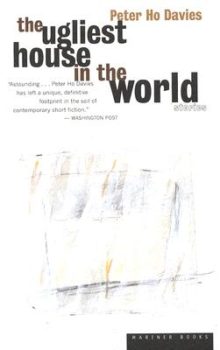 That’s a great point. How did you settle on the four sections we find in the final draft, the four figures? Were there any that didn’t ultimately make the cut?
That’s a great point. How did you settle on the four sections we find in the final draft, the four figures? Were there any that didn’t ultimately make the cut?
There are other representative Chinese or Chinese-American figures I’ve looked into at various times. Li Ling-Ai, say, who among many other things was a partner of Robert Ripley of Ripley’s Believe It or Not! fame (I’m intrigued by her relationship to Ripley’s avowedly Orientalist tendencies). I’ve also been drawn in the past to the actor Burt Kwok, best know probably as Cato in the Pink Panther movies (Inspector Clouseau’s Asian servant, who engaged in slap-stick martial arts battles with him in each film), who for years in my youth was just about the only Asian face on British TV, playing everything from Chinese to Japanese to aliens on Doctor Who. If I were writing the book years from now maybe Peter Liang, the NYC cop whose ricochet killed Akai Gurley, might have featured, maybe even Wendi Deng, Rupert Murdoch’s ex, who is rumored to have had an affair with Tony Blair!
That said, the choices of Ah Ling, Anna May, and Vincent Chin felt “natural” to me. Anna May and Vincent are iconic, of course, and while Ling is more obscure, the role of the Chinese on the Transcontinental also has a kind of iconic status (it’s the Chinese-American origin story in a sense). Each of the figures also spoke to me personally. I’ve had a long fascination with film, and film-making—it crops up in The Welsh Girl and in earlier short stories—maybe going back to a couple of short stints as an extra in commercials when I lived in Singapore many years ago. Vincent’s story is local—he was killed in Detroit; I live in Ann Arbor—but also reverberated with me when I first heard about it as a teenager in England in the ’80s. Vincent was killed by a couple of white auto-workers who mistook him for a Japanese at the height of the anxiety about Japanese auto imports…and I grew up in car-country in England where some of the same economic fears were felt. Mostly, though, I was drawn to each character’s sense of conflicted identity, their anxieties of representation if you will, which I realized I shared as a writer in general, and a writer of color in particular. And it was that recognition that lead me to include, in the final section, a semi- (though I stress only semi-) autobiographical character, who’s a mixed raced writer.
I suppose we can’t help thinking about The Fortunes in the context of recent political events—especially, with the mention of Vincent’s section, of the many hate crimes committed over the past few weeks. Forgive me if this question becomes too grand as we near the end of our interview, but can you comment on your own sense of the potential of historical fiction to speak to the present moment? What can writing about the past accomplish that writing about the present, maybe, can’t? And is this part of what actively draws you to these settings, or something you consider later?
The timeliness of the Vincent Chin case—a hate crime that sprang from an atmosphere of economic anxiety and rhetorical scapegoating (he was beaten to death with a baseball bat by disgruntled auto-workers who thought he was Japanese, whom they blamed for the decline of the US car industry)—is as inescapable as it is dismaying. That section actually had a Donald Trump quote (about how he’d negotiate tariffs with China) as its epigraph in an early draft:
You can have one man say [in a mouse-like voice], “We’re gonna tax you 25 percent,” and I can say [in his normal voice], “Listen you motherfuckers, we’re gonna tax you 25 percent.” You’ve said the same exact thing, but it’s a different message.
But we took it out after my editor suggested it might seem dated by the time the book appeared. If only! What I was interested in there was Trump’s use of the same insult that seems to have incited the confrontation with Vincent, but in some ways I “prefer” the line by Lee Iacocca that’s now included in the story. Iacocca—himself once touted as a Republican Presidential nominee—was the head of Chrysler at the time of Vincent’s death, a case he must have known about not least because one of the killers was a Chrysler plant superintendent, and yet within ten years he was talking of Japanese companies “beating our brains in.” That’s a fascinating—and presumably unconscious—rhetorical move, the appropriation of a grievance that is then turned on the original victims. It puts me in mind of certain moves of the far right, their appropriation of the language of black protest (“black power” becomes “white power,” “black lives matter” becomes “all lives matter,” etc.) and indeed of certain rhetorical moves by Trump himself (calling his opponents “crooked,” or “liars,” feels suspiciously like displacement). It’s a basic defense mechanism, a schoolyard trope indeed, as the “You’re the puppet” exchange at one of the debates illustrated.
Still, all the above are less reflections of some conscious intent on my part to write a historical fiction that would speak to the present (though I’ve done that on other occasions—in a short story, say, that uses the War of the Worlds broadcast panic as a way of approaching 9/11), than the present speaking back to the past. This happened with my last novel, The Welsh Girl, too, a World War II-era book about POWs that was started in 1999, but which became differently relevant after 9/11, after the wars in Afghanistan and Iraq, and after our treatment of POWs at Guantanamo and Abu Ghraib. I used to say that I preferred and aimed myself to write historical fiction that spoke in some form to the present, but how could it not, written as it is by writers who live in that present. Even if our intent is pure escapism, we’re escaping from something.
Writing about the past can, I hope, come at contemporary issues sideways and shed a light that reveals them in ways that they might not appear under the immediate political glare. Whiteness, I argue in The Fortunes, for instance, has been constructed for more than a century, and very likely longer, in opposition to immigrants of color. The presence of the Chinese in nineteenth-century California in a way made the disparate white immigrants—British, French, German, Irish, etc.—come together and set aside their own differences.
But history and historical novels can, I think—and hope, particularly in the last few weeks—also offer some solace in their long perspective. For all that historical parallels can be alarming—I’ve no doubt, say, that at least a few of the folks running around in their little red hats today would have cheerfully donned brown shirts in another time and place—history can also affirm that if the arc of the moral universe is longer than we’d wish, it does indeed bend towards justice.

